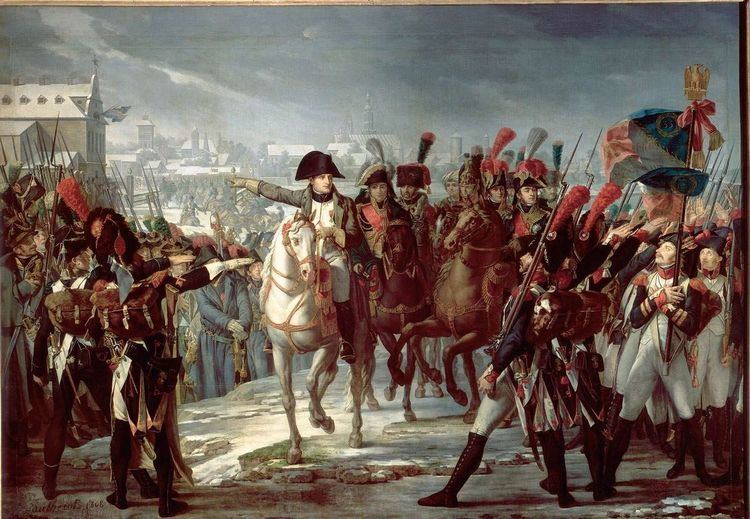Active 1805–1815 Branch Army | ||
 | ||
Size Two to four infantry divisions | ||
The II Corps of the Grande Armée was a military unit that existed during the Napoleonic Wars.
Contents
The Campaigns
At its formation in 1805, Auguste de Marmont was appointed commander of the corps.
The War Of The Third Coalition
It participated in the Ulm Campaign before advancing southeast to serve as a flank guard. Still under Marmont, the troops then served as the garrison of the Illyrian Provinces until 1809 when they became the Army of Dalmatia and later the XI Corps.
The Peninsular War
A new II Corps was created in 1808 in northern Spain from the troops under Marshal Jean-Baptiste Bessières. Soon after, Marshal Nicolas Soult took command of the formation. In 1810, Jean Reynier assumed command of the corps in Spain until 1811 when the unit was suppressed.
The War Of The Fifth Coalition
Meanwhile, a parallel II Corps was created in 1809 to fight against Austria. The formation was led first by Nicolas Oudinot, then by Marshal Jean Lannes who was fatally wounded at Aspern-Essling. Oudinot took over the corps again and won his marshal's baton at Wagram in July 1809.
The Invasion Of Russia
Still commanded by Marshal Nicolas Oudinot, the Corps took part in the 1812 invasion of Russia, at which point its size was roughly 40,000 men.
6th Division (Legrand)
8th Division Jean-Antoine Verdier
9th Division (Swiss) Pierre Hugues Victoire Merle
Corps Cavalry
Sources: Les effectifs de la Grande-armée pour la campagne de Russe de 1812 - Paris 1913 Adjutant's Call of the Military Historical Society Vol. III - U.S.A.
The War Of The Sixth Coalition
The corps was reorganized in Germany in 1813 and Marshal Claude Perrin Victor was appointed to lead it.
The War Of The Seventh Coalition
The corps was headed by Honoré Charles Reille in 1815 and fought at Waterloo.
